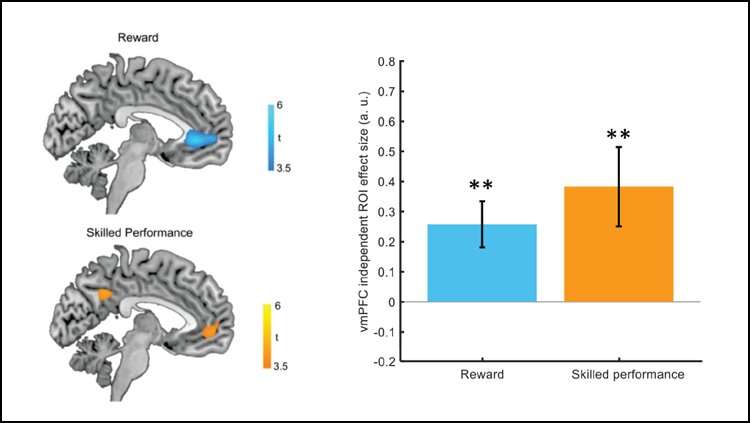Uncovering your preferences via brain activity and mood

People can struggle to accurately assess how they feel about something, especially something they feel social pressure to enjoy, like waking up early for a yoga class. How they really feel can be gleaned from their mood and their brain activity in reward regions, according to new research published in JNeurosci.
Chew, Blain et al. measured participants' mood with repeated questions and their brain activity with fMRI as they earned two types of rewards. Participants chose a box to earn points tied to how much money they would earn at the end of the task—an extrinsic reward. Then they played a game where they navigated a cursor through on-screen barriers. They did not earn anything for playing the game beyond their own satisfaction with doing well—an intrinsic reward. The participants answered questions about how they felt throughout the study.
The research team developed a mathematical equation to determine how much intrinsic and extrinsic rewards contributed to the participants' mood in a particular moment. Most people felt happier after earning more points or successfully completing the game, but the contribution of either reward to happiness varied from person to person. People whose happiness was more swayed by intrinsic rewards had more activity in their ventromedial prefrontal cortex, a reward area, during intrinsic rewards compared to extrinsic rewards, and vice versa.
These results provide a potential avenue to assess preferences without outright asking.
More information: A Neurocomputational Model for Intrinsic Reward, JNeurosci (2021). DOI: 10.1523/JNEUROSCI.0858-20.2021



















